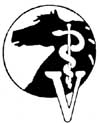MSM and Horses Reviewed | Equine Clinical Research
Reprinted with permission, ©1987
MSM REVIEWED
William E. Jones, DVM, PhD
 | Veterinary interest in dimethyl-sulfoxide (DMSO) and its derivative methylsulfonylmethane (MSM) has increased in recent years. Topical use of DMSO is FDA approved, but as internal use of DMSO increases (such as IV injections) researchers and practitioners are turning to MSM because of the absence of the objectionable taste/smell. Sometimes referred to as DMSO2, MSM is a stable, odorless and colorless crystalline end product of the methyl-S-methane chemical series.5 This series of compounds has been recently determined to be an important supplier of bio-available sulfur to the earth's plant and animal life. |
MSM can be administered orally to horses and other animals without rejection due to unusual smell or taste. Although the use of MSM has been mostly for prophylaxis of just about every unhealthy condition,4 those who have prescribed MSM make many claims as to the benefits it brings to the patient. While, these claims tend to make me skeptical, nevertheless, we have published several articles over the years about this seemingly amazing product. Some of the potential pharmacological uses of MSM are:
- Moderating allergic reactions.
- Moderating gastrointestinal tract upset from many causes, including diet and oral drugs.
- Correcting malabsorption of other nutrients such as minerals whose imbalance relate to problems such as osteochondrosis.
- Antiparasitic action.
- Pain and inflammation relief.
- Natural antimicrobial and antioxidant.
Without FDA approval, it is natural to worry about toxicology. The published data, together with methyl-sulfonylmethane's historical presence in plants and animals is encouraging. Dr. John Metcalf, who has used the product for years, says "we are dealing with quite a safe substance."4
Using radiolabeled S35, quite a bit has been learned about MSM movement and metabolism in the body. Taken orally, a portion binds to receptor sites of the mucosal membranes. Any excess is absorbed, passing to the blood and then to the unit body structures, or cells. It quickly crosses the cell membrane and can thereafter be found in the inner or subcellular fractions including nuclear, mitochondrial, lysosomal and microsomal structures. In specialized structures within these cells, the sulfur is biotransformed into the multitude of organo-sulfur molecules required by the horse in good health. In mammals, MSM not metabolized is eventually excreted by the renal pathway, and through perspiration and respiration. Only traces pass with the feces.2
While sulfur is required by both plants and animals, neither can use elemental sulfur directly. Dr. Robert Herschler, a leading MSM researcher, believes that methyl-S-methanes are important sources and storage forms of bioavailable sulfur for both plants and animals. Following ingestion of S35 labeled MSM, every normal organo-sulfur compound so far isolated assays positive for the incorporated label. This confirms both bio-availability and nonselective utility. MSM donates sulfur for the biosynthesis of both methionine and cysteine, important protein-building blocks. Sulfur derived from MSM is also found in keratin, (hoof, horn and hair protein), serum albumins, connective tissue, immunoglobulin G and transferrin. Sulfur bonds, derivable from MSM, also sustain proper conformation of specific enzyme molecules; an absolute requirement for proper function. This means MSM is the most stable and convenient source of the macronutrient supplement for the horse. It is a readily accepted food, and is legally marketed as such.3
It has been suggested that most mammals are chronically deficient in bio-available sulfur, as young horses fed a ration of MSM seem friskier, huskier and simply look better.
Classified as a drug, MSM falls under the jurisdiction of the FDA. But, as a food, it does not. There are substances, such as sodium chloride, which can be considered both a food and a drug. Sprinkled on your eggs in the morning, salt is a food. Dissolved in sterile water and given IV, salt is a drug. Currently the daily amount of MSM given as a food (on grain) is two heaping teaspoonfuls night and morning. It works best if the powder is dissolved first in warm water and then poured over the grain. Used orally as a drug, the dosage of MSM may be as high as 100 grams, or more, per week.
DMSO and MSM have tremendous potential in improving equine health. The third decade of research on these products is beginning, yet political barriers still block their widespread use as legal drugs. The non-medical biological uses for these products steadily unfold, demonstrating an amazing diversity of applications.1
REFERENCES
1. Jacob SW and Herschler R: Introductory remarks: DMSO after twenty years. An NY Acad Sci 411:xii-xvii, 1983.
2. Herschler, RJ Personal communication.
3. Herschler, RJ MSM - A nutrient for the horse. Eq Vet Data 7(7) 268, 1986.
4. Metcalf, JW. MSM - Status report. Eq Vet Data 7(21) 332-333, 1986.
5. Metcalf, JW. MSM - A dietary derivative of DMSO. J Eq Vet Sci 3(5), 148.1983.